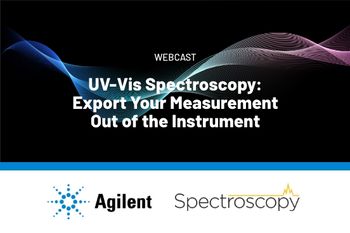
Spectroscopy sat down with Brandon Gayle, who specializes in training first responders to use FT-IR, Raman, and other analytical techniques in emergency situations.


Determining the Age of Bloodstains at Crime Scenes Using ATR FT-IR Spectroscopy and Chemometrics

Spectroscopy sat down with Brandon Gayle, who specializes in training first responders to use FT-IR, Raman, and other analytical techniques in emergency situations.

As part of “The Future of Forensic Analysis” content series presented by Spectroscopy, we sat down with Dr. Rajinder Singh of Department of Forensic Science, Punjabi University, Patiala, to talk about his recent work using attenuated total reflectance Fourier transform infrared spectroscopy (ATR-FT-IR) to distinguish different animal species based on hair samples.


A recent study from Australia used mid-infrared (MIR) spectroscopy to analyze the spectra of soil core samples taken from vegetated coastal ecosystems (VCEs).

Spectroscopic analytical techniques are crucial for the analysis of agricultural products. This review emphasizes the latest advancements in several key spectroscopic methods, including atomic, vibrational, molecular, electronic, and X-ray techniques. The applications of these analytical methods in detecting important quality parameters, adulteration, insects and rodent infestation, ripening, and other essential applications are discussed.

A recent study reveals on the challenges and limitations of AI-driven spectroscopy methods for rapid food analysis. Despite the promise of these technologies, issues like small sample sizes, misuse of advanced modeling techniques, and validation problems hinder their effectiveness. The authors suggest guidelines for improving accuracy and reliability in both research and industrial settings.

In part two of our exploration of wood forensics, a deep dive of a recent study from Panjab University explains why attenuated total reflectance Fourier transform infrared (ATR-FT-IR) spectroscopy improves on traditional methods in this space.

Wood forensics is an important field that helps authenticate wood and addresses the challenges that illegal logging brings. In this multipart article, we explore the wood forensics industry, and how spectroscopic techniques are contributing to its advancement.

A joint French-Canadian study examined the ripening process of commercially popular Comté and cheddar cheeses, which are widely consumed in those countries, utilizing mid-infrared (mid-IR) and synchronous fluorescence spectroscopy (SFS) in their analysis.

This review article explores recent advancements in Fourier transform infrared (FT-IR) spectroscopy, highlighting its advancing capabilities and applications across diverse scientific disciplines.

Stanford University researchers introduce advanced predictive model for sustainable aviation fuels, significantly improving accuracy and efficiency.

Top articles published this week include an article on classifying space debris, a report on a new fiber-dispersive Raman spectrometer, and an examination of Fourier transform infrared (FT-IR) microscopy.

A recent study highlights the critical role of Fourier transform infrared spectroscopy (FT-IR) in the qualitative and quantitative analysis of asphalt materials, focusing on its applications in quality control, material identification, and the analysis of modification and aging mechanisms.

In this tutorial, we examine the techniques for preparing samples for transmission analysis using single windows, compression cells, and, finally, epoxy “pucks” and microtomes.

A recent study examines using hyperspectral imaging (HSI) to analyze single-pixel images of space objects.

A recent study compared ATR FT-IR and NIR spectroscopy to identify microplastics in biosolids, finding significant correlations with consumer plastics like polyethylene and polypropylene. These results highlight the role of biosolids in introducing microplastics to agricultural soils and accentuate the importance of accurate identification methods.

A recent study looked at the use of Fourier-transform infrared (FT-IR) spectroscopy in ensuring the safety and efficacy of dairy products.

Webinar Date/Time: Thursday, September 12th, 2024 English Session: 10:00 AM BST | 11:00 AM CEST French Session: 10:00 AM BST | 11:00 AM CEST

A recent study looks at using Fourier transform infrared (FT-IR) spectroscopy to distinguish between platinum-resistant and platinum-sensitive ovarian cancer tissues.

A recent study examined using Fourier-transform infrared (FT-IR) spectroscopy and machine learning to identify compounds in nine Chinese beers.

A recent study examines using a new predictive model to accurately and efficiently identify evanescent trauma in skin tissue.

A study from Vanderbilt University used nano Fourier-transform infrared (FT-IR) spectroscopy to study central African wooden sculptures and learn more about material composition.

A recent study uses nuclear magnetic resonance (NMR), tandem mass spectrometry (MS/MS), and infrared spectroscopy (IR), to measure molecular complexity.

Top articles this week on Spectroscopy covered topics such as infrared (IR) spectroscopy, lithium metal batteries, and artificial intelligence.

In this article, the editors of Spectroscopy highlight the use of Fourier transform infrared (FT-IR) in several key industries that use spectroscopic techniques.